
Home
Services
About us
Blog
Contacts
🧼 Custom Mobile App Development for Window Cleaning Robots: Smart Control for a Streak-Free Future
1. Introduction: Why Window Cleaning Robots Need Smarter Apps
2. The Current Market: Growth, Models & User Expectations
3. From Control to Intelligence: What a Custom App Can Unlock
4. Technical Architecture of Smart Window Cleaning Ecosystems
5. Why A-Bots.com Is the Right Partner for Your Next-Gen Cleaning Robot
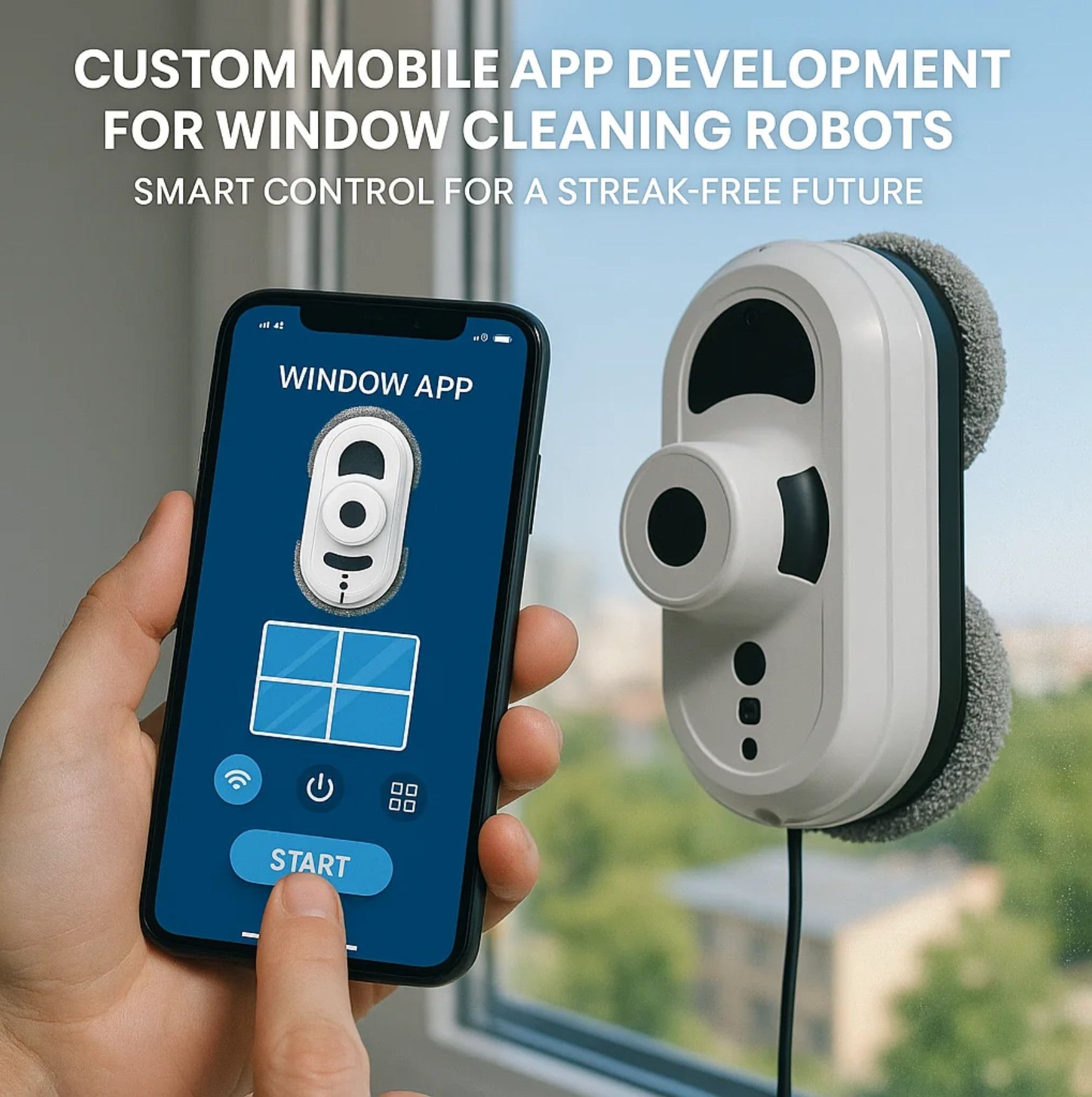
1. Introduction: Why Window Cleaning Robots Need Smarter Apps
In the evolving landscape of smart home technology, window cleaning robots have emerged as a notable innovation, offering automated solutions for a traditionally labor-intensive task. As urbanization accelerates and architectural designs favor expansive glass facades, the demand for efficient and safe window cleaning methods has intensified. Consequently, the integration of advanced mobile applications with these robotic cleaners is becoming increasingly essential, transforming them from mere gadgets into intelligent, user-centric devices.
The Growing Market for Window Cleaning Robots
The global market for robotic window cleaners is experiencing significant growth. According to a report by Technavio, the market is projected to expand by USD 3.35 billion from 2024 to 2028, driven by factors such as the increasing number of buildings with large windows and advancements in technology. This surge reflects a broader trend towards automation in household chores, where consumers seek devices that offer convenience without compromising on performance.
Consumer Expectations in the Age of Smart Devices
Modern consumers expect more from their devices than basic functionality. For window cleaning robots, this means seamless integration with mobile applications that offer intuitive controls, real-time updates, and customization options. Features such as scheduling cleanings, selecting specific areas for cleaning, and receiving maintenance alerts are no longer luxuries but expectations. Moreover, the ability to monitor the robot's progress and status remotely adds a layer of convenience and control that aligns with the lifestyles of tech-savvy users.
The Role of Mobile Applications in Enhancing User Experience
Mobile applications serve as the bridge between the user and the robotic device, facilitating communication and control. A well-designed app can significantly enhance the user experience by providing:
- User-Friendly Interface: Simplified controls and clear visuals make it easier for users to operate the robot effectively.
- Customization Options: Users can tailor the cleaning process to their specific needs, such as setting cleaning schedules or defining cleaning zones.
- Real-Time Monitoring: Live updates on the robot's status and progress allow users to stay informed and make adjustments as needed.
- Maintenance Alerts: Notifications about battery levels, software updates, or potential issues help in maintaining the device's optimal performance.
For instance, the HOBOT app offers multiple cleaning modes and manual controls, enhancing the robot's versatility and user engagement (Prospera Health and Hospitality).
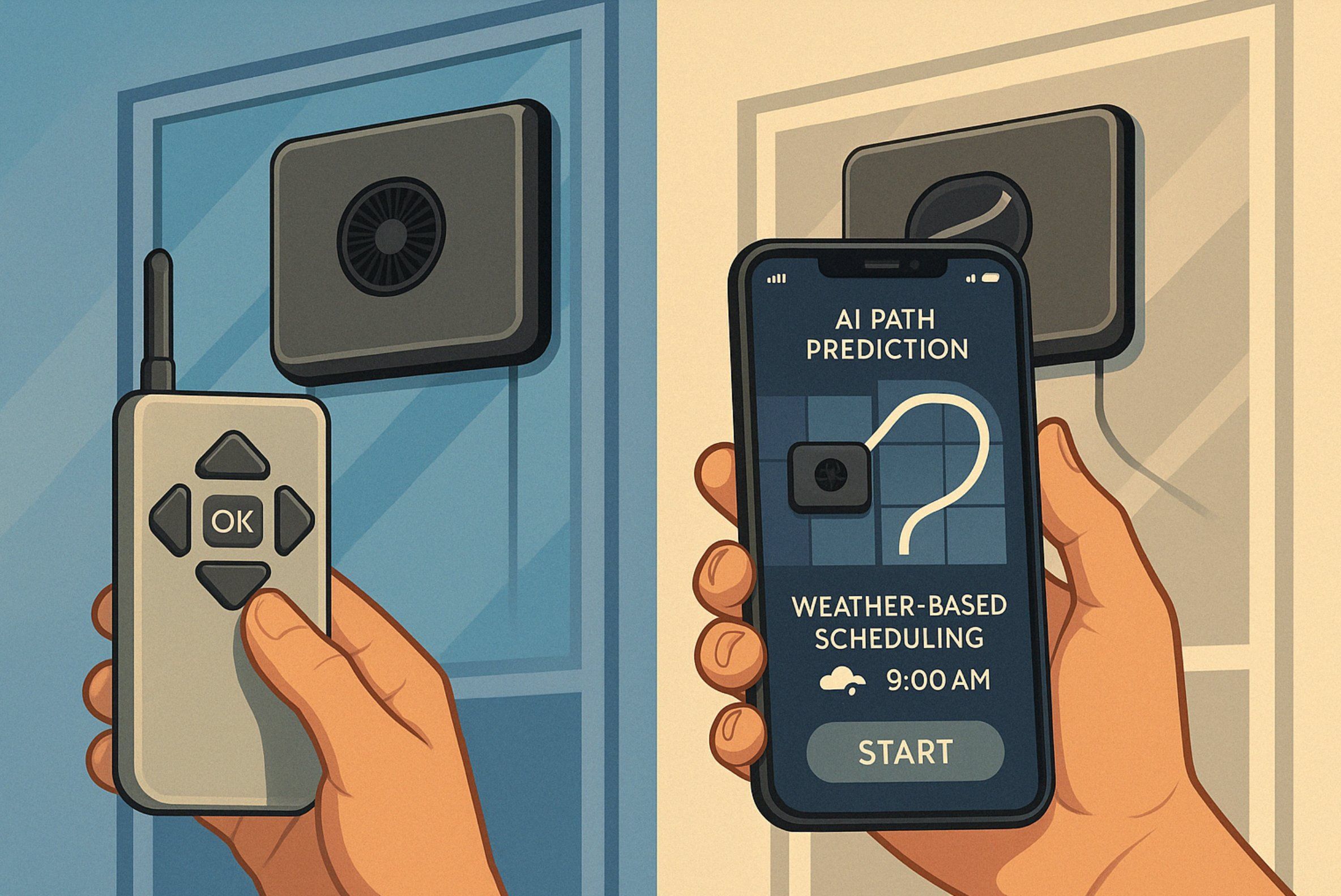
Challenges and Opportunities in App Development
Developing a mobile application for window cleaning robots presents both challenges and opportunities. Ensuring compatibility across various devices and operating systems, maintaining a secure connection between the app and the robot, and providing regular updates to improve functionality are critical considerations. However, overcoming these challenges opens the door to creating a product that not only meets but exceeds consumer expectations, setting a brand apart in a competitive market.
As the market for window cleaning robots continues to grow, the importance of integrating sophisticated mobile applications becomes increasingly evident. These apps are not just accessories but essential components that enhance functionality, user satisfaction, and brand loyalty. By focusing on user-centric design and leveraging technological advancements, manufacturers can deliver products that truly resonate with modern consumers, paving the way for a streak-free future in both windows and user experiences.
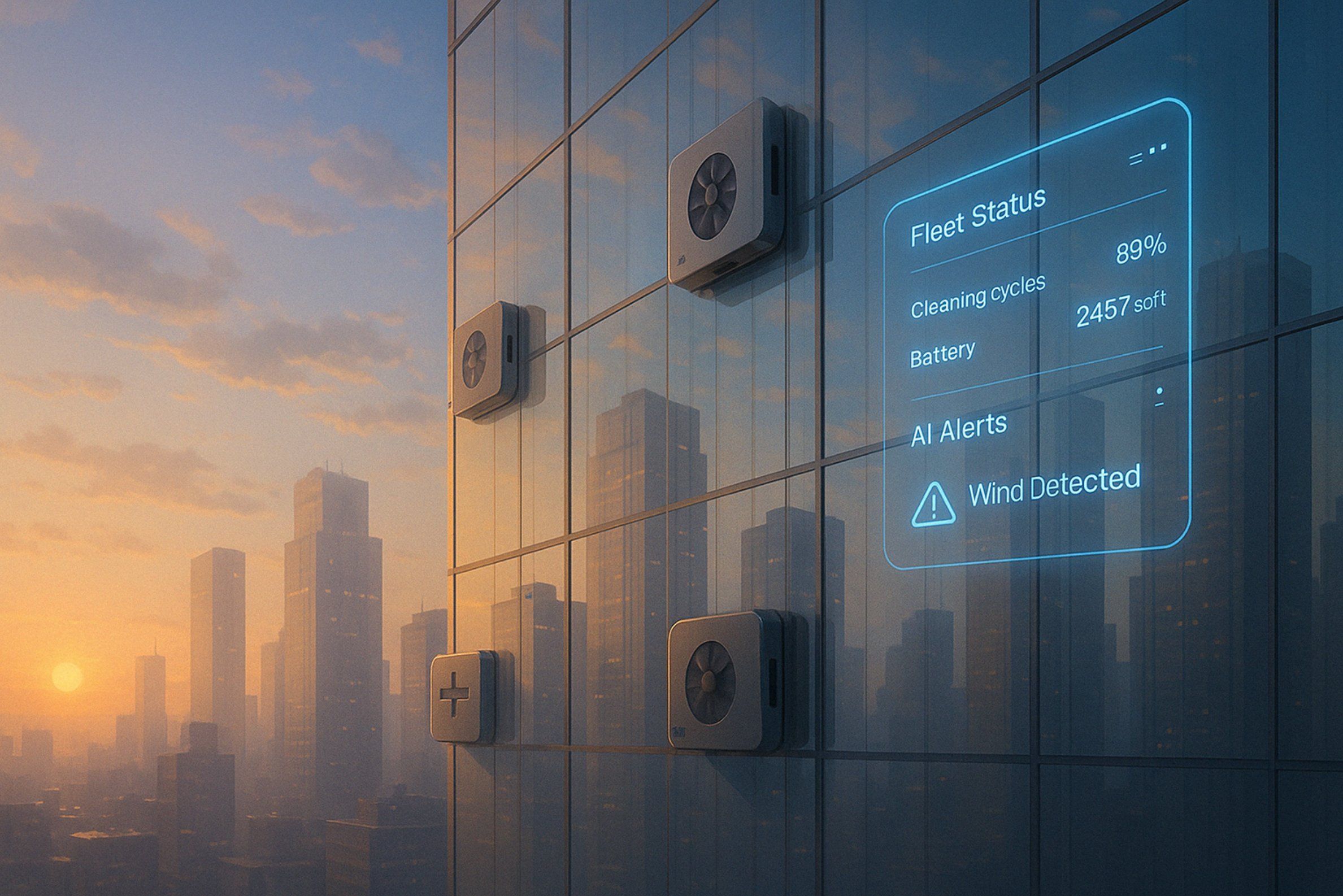
2. The Current Market: Growth, Models & User Expectations
The global window cleaning robot market is no longer an emerging curiosity — it is an expanding ecosystem that responds to the dual needs of modern lifestyles: convenience and automation. As smart home devices become more sophisticated and ubiquitous, consumers are seeking not only intelligent solutions for traditional household chores but also safer alternatives for tasks that involve risk — like washing high, inaccessible windows.
According to Cognitive Market Research, the global market for window cleaning robots is expected to reach USD 1.59 billion by 2025, growing at a CAGR of 16% through 2033. Other reports estimate even faster growth when factoring in industrial and B2B applications. North America is projected to hold over 40% of global revenue, thanks to early tech adoption and the popularity of large-glass architecture in urban settings. Meanwhile, the Asia-Pacific region is expanding at a CAGR of 18%, driven by rapid urbanization, a rise in disposable income, and compact apartments with large balcony windows — particularly in China, South Korea, and Japan.
These numbers reflect more than market enthusiasm. They signal a shift in how consumers and businesses perceive labor in relation to cleanliness and safety. In high-rise buildings, traditional window washing remains hazardous and expensive. Robotics offers not just automation but reliability, precision, and consistency, making it an appealing long-term investment for both residential users and commercial property managers.
Manufacturers like Ecovacs and Hobot have helped pave the way for mainstream consumer acceptance. Ecovacs' WINBOT W2 Omni, for instance, features adaptive suction, edge detection, and mobile app integration that allows users to trigger cleaning cycles, monitor progress, and receive alerts from anywhere. Hobot's 2S model is another example, with dual water spray nozzles, a brushless motor, and compatibility with voice assistants. Even startup innovators like Skyline Robotics are pushing the boundaries — their "Ozmo" robot cleans entire skyscraper facades using AI and SLAM (simultaneous localization and mapping), replacing dangerous manual labor with precise, autonomous systems.
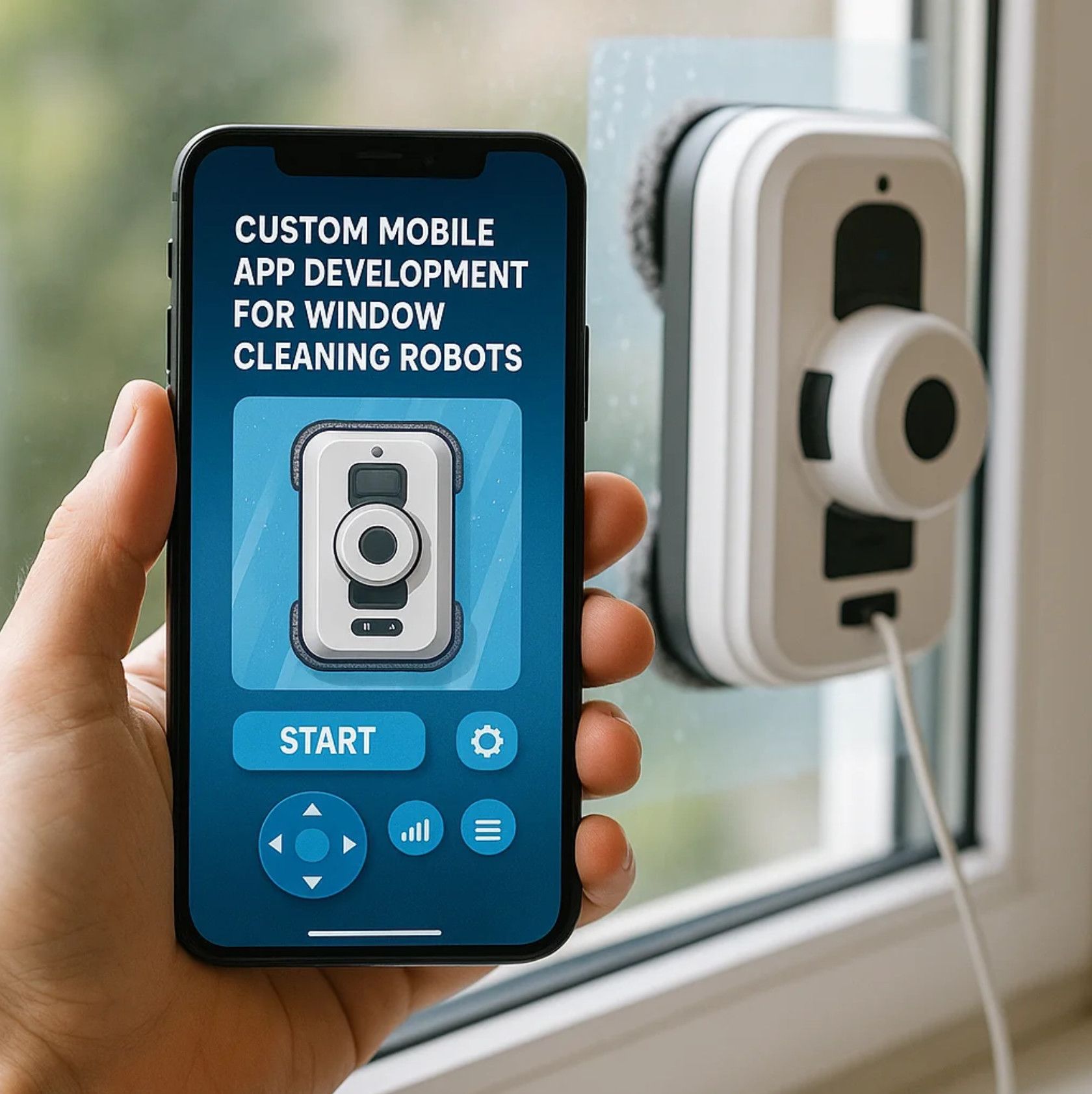
Yet with all this innovation in hardware, the real frontier lies in software. Consumers today expect control from their phones — not a clunky remote. They want their devices to speak to one another. A robot that only cleans when told is good; a robot that cleans when it predicts you’ll want it done, or based on weather data, pollen count, or household schedule, is extraordinary.
“Today’s users expect their cleaning robots to be as smart and connected as their smartphones,” says Robert Chang, CTO of a leading home automation firm. “If your app isn’t smarter than the glass the robot is cleaning, you’ve already lost the user.”
User expectations have matured. The bar is no longer just streak-free windows — it’s frictionless interaction, real-time customization, voice command compatibility, and proactive maintenance alerts. Moreover, in households with multiple users, apps must support multi-profile setups, usage logs, and even child-lock or privacy settings.
And while the B2C market is thriving, the B2B opportunity is perhaps even more compelling. Window cleaning robots used in hotels, airports, malls, and corporate skyscrapers require central control systems, fleet tracking, and maintenance dashboards — all of which must be accessed and managed through mobile or web-based interfaces. A single robust app may support dozens of units, each assigned to different floors, zones, or buildings — with access differentiated by user roles.
Manufacturers that treat mobile apps as extensions of their hardware — not as core product value — will find themselves left behind. A superior cleaning robot without a smart, intuitive, stable app is like a luxury car with no steering wheel. The success of these devices depends on how naturally users can interact with them. That’s why app design and architecture is not a cosmetic choice — it’s mission-critical UX infrastructure.
In conclusion, the window cleaning robot market is evolving fast — and with it, the expectations of those who buy and deploy these devices. Manufacturers must understand that software is now the primary interface through which users evaluate product quality, usability, and reliability. Brands that invest in custom-built mobile applications will not only meet expectations — they’ll define them.
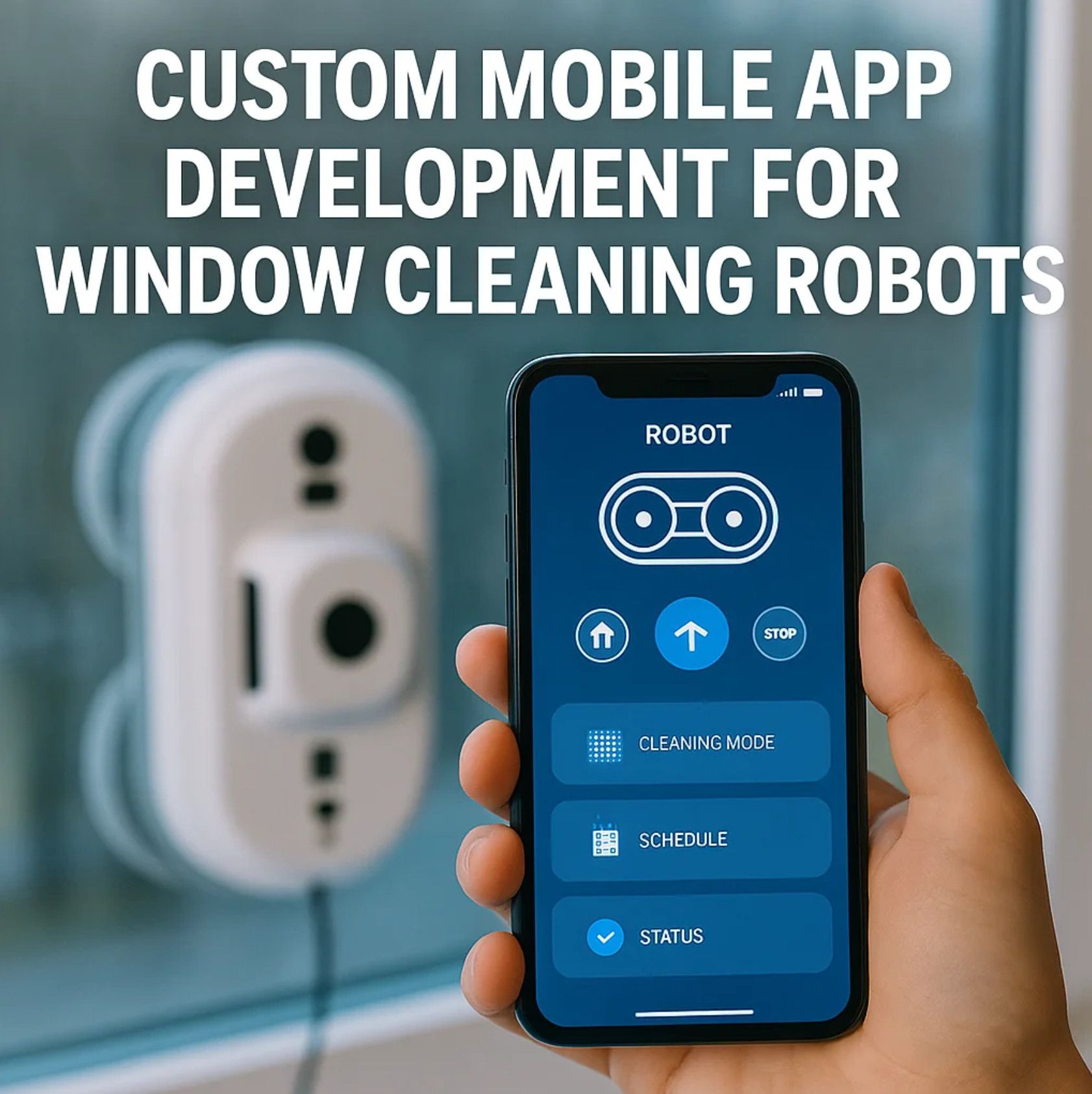
3. From Control to Intelligence: What a Custom App Can Unlock
In the rapidly evolving landscape of smart home technology, window cleaning robots have emerged as a testament to innovation, offering automated solutions for a traditionally labor-intensive task. However, the true potential of these devices is realized when paired with custom mobile applications that transcend basic control functions, ushering in an era of intelligent, user-centric experiences.
Beyond Basic Controls: The Evolution of User Interaction
Initially, window cleaning robots were designed with simple remote controls, allowing users to start, stop, or change cleaning modes. While functional, this limited interaction failed to leverage the full capabilities of modern smartphones and the expectations of tech-savvy consumers. Custom mobile applications have since transformed these interactions, providing intuitive interfaces that offer real-time feedback, customizable cleaning schedules, and integration with other smart home devices.
For instance, the ECOVACS HOME App, designed for the WINBOT W2 OMNI, offers multiple cleaning modes and an omnidirectional remote control, enhancing user convenience and control (ecovacs.com).
Intelligent Features: Enhancing Efficiency and User Experience
Custom apps can incorporate advanced features that significantly enhance the efficiency and user experience of window cleaning robots. These include:
- AI-Powered Navigation: Utilizing algorithms to optimize cleaning paths, ensuring comprehensive coverage and efficient operation.
- Real-Time Monitoring: Providing users with live updates on the robot's status, cleaning progress, and any potential issues.
- Voice Control Integration: Allowing users to operate the robot using voice commands through platforms like Amazon Alexa or Google Assistant.
- Maintenance Alerts: Notifying users when the robot requires attention, such as cleaning the pads or refilling the water tank.
These features not only improve the functionality of the robots but also align with the modern consumer's desire for seamless, integrated smart home experiences.
Customization: Catering to Diverse User Needs
Custom mobile applications enable a high degree of personalization, catering to the diverse needs of users. Users can set specific cleaning schedules, define cleaning zones, and adjust settings based on the unique characteristics of their windows. This level of customization ensures that the robot operates in a manner that best suits the user's lifestyle and home environment.
As one industry expert aptly stated, "The future of home automation lies in personalization; devices must adapt to users, not the other way around."
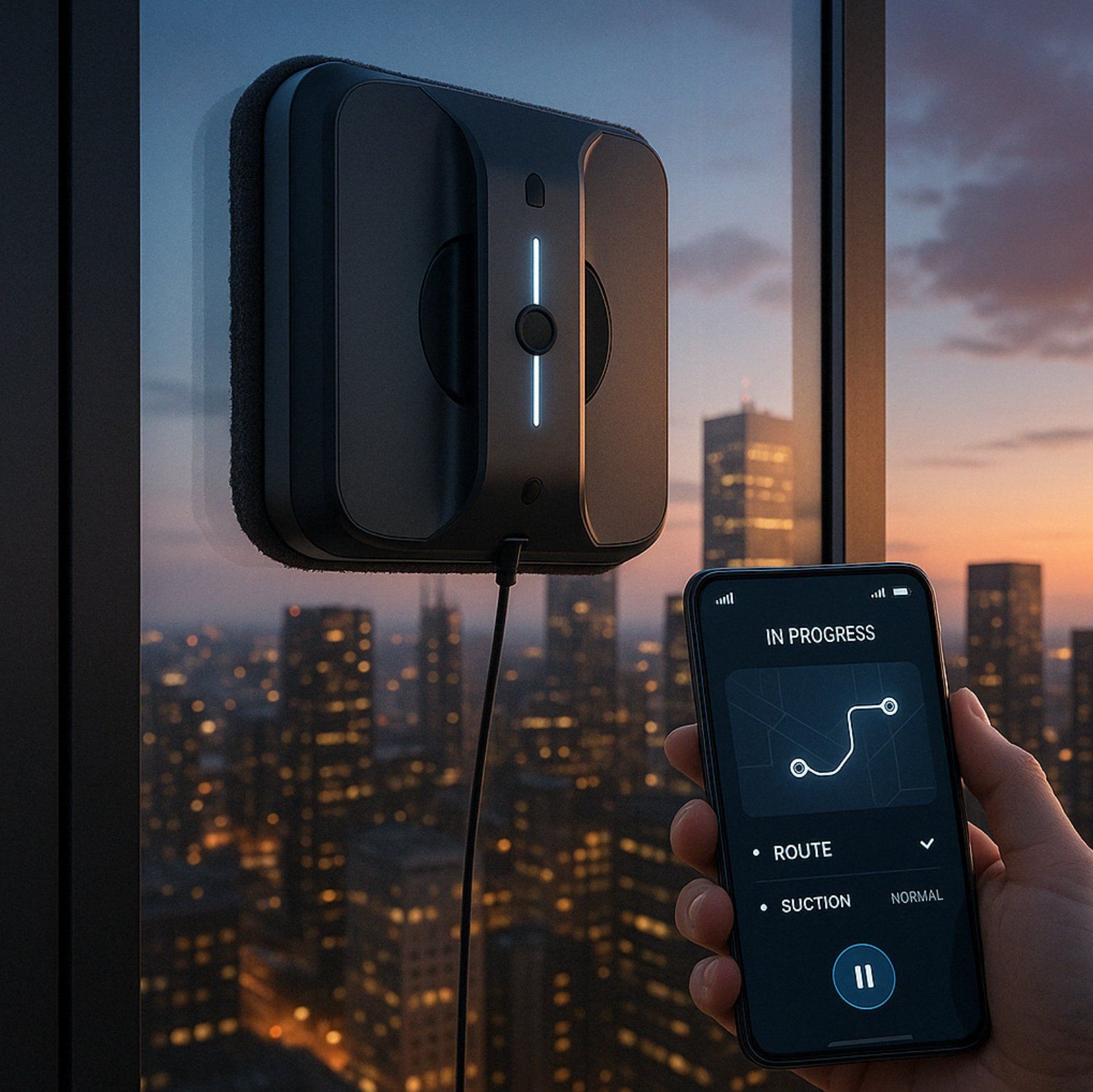
Data Analytics: Driving Continuous Improvement
Custom apps can collect and analyze data on cleaning patterns, frequency, and user preferences. This information is invaluable for manufacturers aiming to improve product performance and for users seeking to optimize their cleaning routines. By leveraging data analytics, companies can make informed decisions on software updates, feature enhancements, and customer support strategies.
Security and Privacy: Building User Trust
With increased connectivity comes the responsibility of ensuring data security and user privacy. Custom applications must incorporate robust security measures, including encrypted data transmission and compliance with privacy regulations. Building user trust is paramount, and transparent data practices are essential in achieving this goal.
The integration of custom mobile applications with window cleaning robots marks a significant advancement in smart home technology. By moving beyond basic controls to intelligent, personalized experiences, these applications unlock the full potential of robotic cleaners. As consumer expectations continue to evolve, the emphasis on intelligent features, customization, data analytics, and security will be crucial in defining the success of window cleaning robots in the market.
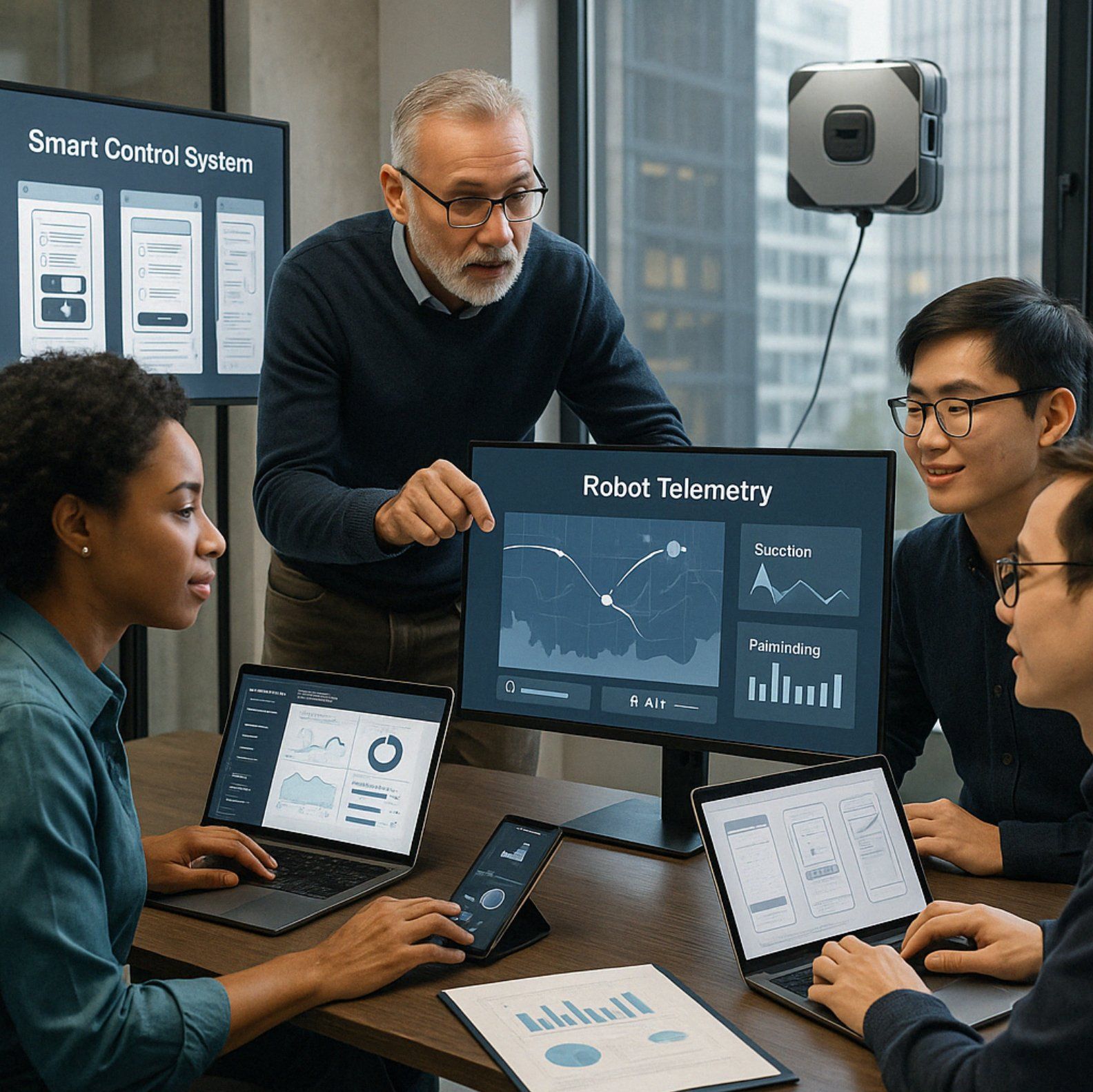
4. Technical Architecture of Smart Window Cleaning Ecosystems
At first glance, a window cleaning robot may appear as a self-contained gadget — a device with suction, sensors, and a few lines of onboard firmware. But in the era of connected homes and intelligent automation, such simplicity is no longer sufficient. Behind every truly “smart” cleaning robot lies a carefully orchestrated architecture — an invisible web of wireless protocols, embedded systems, cloud integrations, user interfaces, and security frameworks. Without this technological backbone, even the most elegantly designed robot becomes just a one-trick machine, isolated from the evolving digital ecosystem around it.
The cornerstone of this architecture is connectivity. Whether using Bluetooth Low Energy (BLE) for local pairing or Wi-Fi for remote operation, the communication protocol defines how the robot exchanges data with the user's mobile app. This communication must be continuous, low-latency, and secure. It is the channel through which commands are sent, telemetry is received, cleaning logs are stored, and over-the-air (OTA) updates are delivered. In early-generation devices, this link was often unstable or limited to basic commands. Today, it must support real-time streaming of robot status, adaptive scheduling based on environmental feedback, and bidirectional data sync with the cloud. A mobile app is no longer just a remote control; it’s a dynamic command center.
Inside the robot, things are even more intricate. Navigation is driven by a suite of sensors — optical, infrared, ultrasonic — that collectively enable spatial awareness. Through simultaneous localization and mapping (SLAM) algorithms, some high-end robots like Skyline’s Ozmo can build an internal map of the window surface, adjusting movement patterns for efficiency and avoiding obstacles. But such intelligence only reaches its full potential when made visible and adjustable in the app. For example, users might want to label cleaning zones, set “no-clean” boundaries (such as decals or security stickers), or view path optimizations. This requires a deeply integrated architecture where the robot’s embedded system and the app’s UI framework are in constant conversation.
Then comes the cloud layer — often underestimated, but mission-critical. Cloud infrastructure plays multiple roles. It enables historical data visualization, helps diagnose issues remotely, supports multi-device sync (imagine multiple robots on different floors), and allows AI models to process long-term behavior and suggest optimizations. Moreover, for manufacturers and operators, the cloud acts as a data lake from which anonymized insights can be extracted: average cleaning time per session, frequency of pad changes, or error rates during specific weather conditions. All of this becomes fuel for product iteration and customer support efficiency.
Security, naturally, underpins every layer of this stack. With GDPR and CCPA regulations defining what user data can be collected, how it is stored, and who can access it, app developers must design systems that not only encrypt communication but also give users granular control over permissions. Options like remote shutdown, usage lock during travel, or parental controls are not just nice-to-haves — they are differentiators that foster trust.
Scalability is the final and perhaps most strategic element of the architecture. A cleaning robot intended for a two-bedroom condo may work flawlessly as a standalone device. But when that same technology is deployed across a hotel chain or corporate office park, the architecture must support multi-device orchestration, role-based access control, scheduled task queues, and centralized performance reporting. This is where custom app development becomes more than a UX layer — it’s the operating system of the cleaning operation itself.
Ultimately, building a successful window-cleaning robot is not just about suction or speed. It’s about designing a technology stack where each layer — hardware, firmware, network, cloud, and UX — work together as one. That coherence cannot be achieved with off-the-shelf SDKs or templated dashboards. It demands custom development, collaborative thinking, and a long-term view. The smart window-cleaning robots of the future won’t just clean faster — they’ll clean smarter, safer, and more contextually — thanks to the architecture behind them.
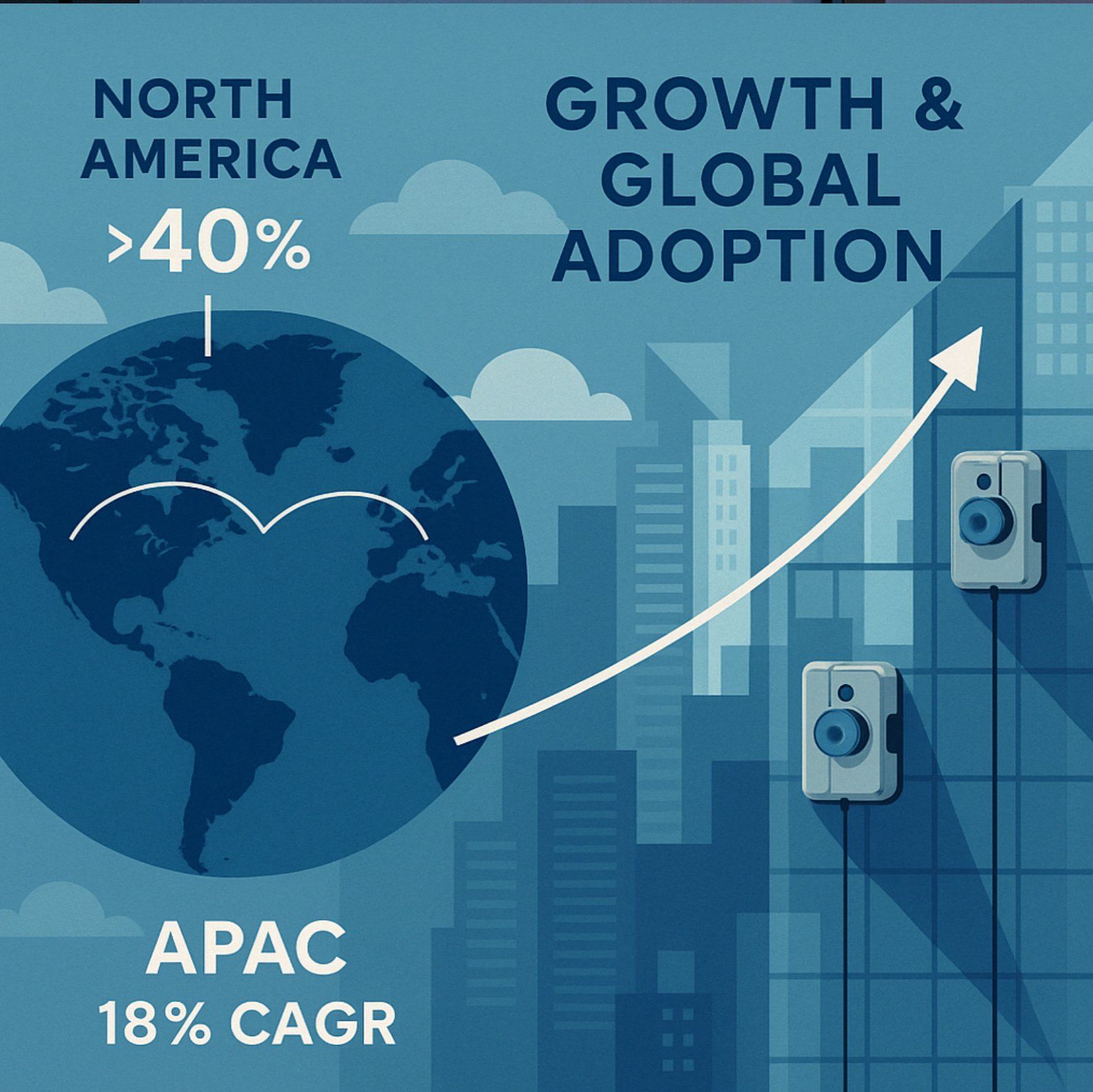
5. Why A‑Bots.com Is the Right Partner for Your Next‑Gen Window‑Cleaning Robot
When manufacturers set out to build a robot that clings to glass forty stories above a city street, they quickly discover that the greatest engineering problem is not suction, traction, or even weatherproofing—it is trust. A window‑cleaning robot must convince users that it will finish the job, protect itself, protect the building, and send reliable signals the entire time. That trust is forged—or shattered—inside the software layer, because the mobile app is where every promise the hardware makes is either kept or broken. A‑Bots.com was created to keep those promises.
Our team is deliberately narrow in focus: we build mobile software for robots and connected devices—nothing else. That specialization means we speak the same technical language as your firmware engineers while thinking like product designers and data architects. From the first sprint we treat the app, the robot, and the cloud as a single organism. If a suction sensor reports a pressure drop, the app must decide whether to nudge the robot to retry, alert the user in real time, or pause the cycle and dispatch a diagnostic package to the cloud. Those “edge” decisions are where average SDK‑driven apps fail and where custom logic shines—because every brand’s risk tolerance, user profile, and cleaning algorithm is different.
Unlike contract houses that hand off work the moment version 1.0 hits the store, A‑Bots.com operates on a continuous‑innovation model. We build telemetry dashboards so both your engineers and our own can watch anonymized fleets in the field, detect anomalies, push OTA patches, and A/B‑test new navigation heuristics without breaking user workflows. That loop shortens time‑to‑insight and converts raw sensor data into road‑mapped feature updates. It also creates a living feedback channel for your marketing and support teams: What hours of the day do owners actually run their robots? How often do they cancel a cycle midway? What geographic regions show higher error rates in cold months? These are product truths buried in log files—until the right app exposes them.
One of our enterprise clients, a facilities‑management company that operates a fleet of facade‑cleaning robots across eight countries, framed the impact succinctly:
“Before A‑Bots.com we had machines; after the first release we had a service.”
Their metrics tell the story: a 27 percent reduction in unscheduled maintenance visits and a 43 percent uptick in end‑user satisfaction, traced directly to app‑driven self‑diagnostics and role‑based access control.
Security is another arena where off‑the‑shelf solutions stumble. Because our apps authenticate every command with rotating tokens and device‑bound certificates, a stolen phone cannot summon a robot out of its dock. Because logs are signed at the edge, a building owner can audit exactly when and where each robot traversed the glass. Because GDPR‑compliant consent flows live inside the UI, European deployments pass legal review without code forks. These safeguards are not marketing bullet points—they are the silent infrastructure that keeps your product on shelves instead of in recall notices.
We also recognize that a robot rarely lives alone. Many of our latest builds integrate with voice assistants, building‑management systems, and even elevator APIs so a service cart can ride to the roof autonomously. In each case the value is less about the novelty of the integration and more about the composability of the platform: the same REST hooks we expose to Alexa can be reused by a property‑management dashboard tomorrow. Invest once, extend forever.
Of course, serious engineering does not preclude a sense of humor. We like to remind new partners of a guiding principle with a wink: “If your window robot goes on strike, at least the pigeons will applaud.” The joke lands—because everyone in this business knows that jokes are only funny when downtime is rare.
In practical terms, choosing A‑Bots.com means gaining a multidisciplinary squad—mobile architects, embedded specialists, cloud engineers, compliance advisors, and UX researchers—who remain on call long past launch day. We co‑own technical debt, rotate incident response jointly, and schedule quarterly roadmap summits so features align with your hardware iteration cycles. Our incentive is not to rack up billable hours; it is to expand the lifetime value of every robot you ship, because our revenue model scales with your active‑user base.
The window‑cleaning segment is on track to multiply several‑fold within the decade, but that growth will not be shared equally. Brands that still treat the companion app as an afterthought will be competing on price and suction specs alone—commodities that decline in margin every year. Brands that treat the app as the operating system of the experience will command loyalty, subscription revenue, and premium licensing deals with commercial property owners.
A‑Bots.com exists for the latter group. We turn autonomous hardware into trustworthy services, data exhaust into product vision, and early adopters into evangelists. If that sounds like the future you want squeegeed onto every pane of glass your robots touch, we’re ready to build—line by line, packet by packet, window by window.
Hashtags
#WindowCleaningRobots
#SmartCleaning
#IoTApps
#RoboticsSoftware
#CustomAppDevelopment
#BuildingMaintenance
#CleanTech
#ABots
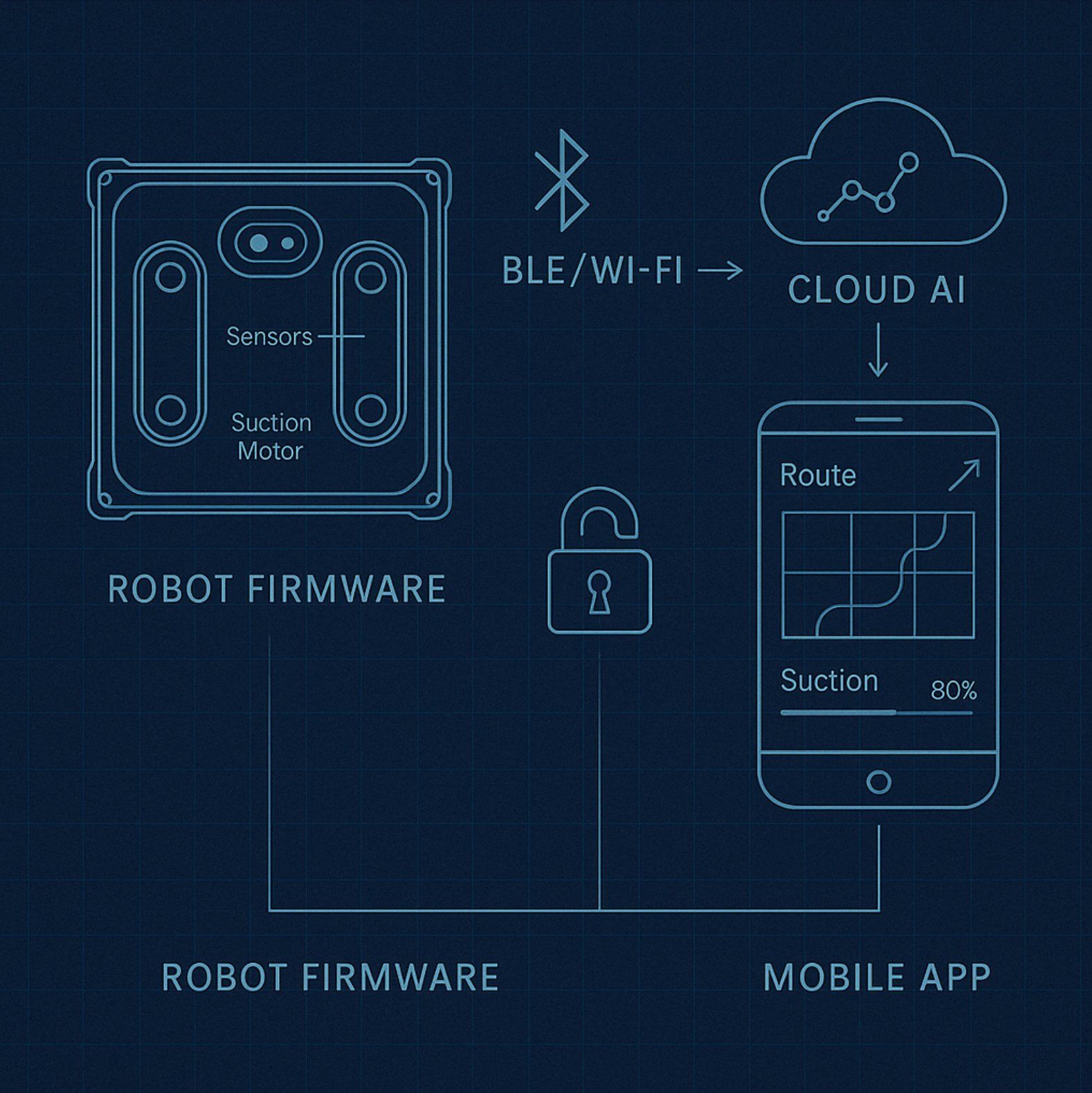
Other articles
Custom CRM for Real Estate Developers Off-the-shelf CRM tools weren’t built for the complexity of real estate development — but we were. This in-depth article explores why custom CRM solutions are redefining how developers manage projects, leads, teams, and revenue. See real-world ROI calculations, key challenges, and expert insights from A-Bots.com, a top CRM development company.
Custom Agriculture App Development for Farmers In 2024, U.S. farmers are more connected than ever — with 82% using smartphones and 85% having internet access. This article explores how mobile applications are transforming everyday operations, from drone-guided field scouting to livestock health tracking and predictive equipment maintenance. It examines why off-the-shelf apps often fail to address specific farm needs and how collaborative, farmer-funded app development is gaining momentum. Through real-world examples and step-by-step guidance, readers will learn how communities of growers can fund, design, and launch custom apps that fit their exact workflows. A-Bots.com offers tailored development services that support both solo farmers and agricultural groups. With offline capabilities, modular design, and support for U.S. and international compliance, these apps grow alongside the farm. Whether you're planting soybeans in Iowa, raising cattle in Texas, or running a greenhouse in California — this article offers the tools and inspiration to build your own farm technology. Discover why more farmers are saying: we don’t wait for the future — we build it.
Custom Drone Mapping Software & Control Apps: Smarter Aerial Solutions by A-Bots.com Custom drone software is revolutionizing how industries operate—from precision agriculture to infrastructure inspection. This article explores why off-the-shelf apps fall short, how AI and modular design shape the future, and how A-Bots.com delivers tailored drone solutions that truly fit. Whether you manage crops, assets, or entire projects, the right software lifts your mission higher.
Custom IoT for Smart Greenhouses and Vertical Farms Modern greenhouses and vertical farms demand more than off-the-shelf solutions. In this article, discover how custom IoT systems — built around your space, your crops, and your team — can unlock new levels of efficiency, automation, and yield. Packed with real-world examples, insights from A-Bots.com engineers, and expert advice, this guide will inspire your next step in smart agriculture. If you're ready to grow smarter — start here.
Custom Coffee Machine App Development Smart coffee is no longer just about flavor — it's about experience. Discover how custom mobile apps for coffee machines unlock new revenue streams, elevate user engagement, and enhance brand loyalty. Backed by real IoT projects, A-Bots.com delivers world-class app solutions that blend tech with taste. Brew the future with us.
Custom Mobile App Development for Smart Wine Cabinets Smart wine cabinets are revolutionizing how wine is stored, served, and experienced. But without a tailored mobile app, their potential remains untapped. This article explores how custom app development turns connected appliances into lifestyle platforms. From inventory tracking and AI-powered recommendations to enterprise-grade restaurant integrations, the right app changes everything. We cover technical architecture, design principles, and real-world use cases. Whether you're a wine lover, hotelier, or hardware brand, you'll discover why mobile UX is now core to wine storage. A-Bots.com delivers expert, future-ready solutions tailored to this niche.
Mobile App Development for Lawn Mowers Smart lawn mowers are transforming how homeowners and businesses manage outdoor spaces. But without powerful software, even the best mower is just hardware. This article explores how custom mobile apps enhance the robotic mowing experience with features like GPS mapping, dynamic scheduling, and real-time feedback. From residential use to commercial landscaping, the impact is clear. We examine the tech architecture behind connected mowers and the critical role apps play in user satisfaction. You'll also learn why off-the-shelf solutions fall short — and how A-Bots.com builds tailored experiences that go far beyond expectations. Whether you're a manufacturer or a visionary startup, this article offers a roadmap to the future of lawn automation.
Mobile App Development for Smart Pet Feeders Smart pet feeders are no longer luxury gadgets — they are becoming vital tools in modern pet care. But their true power is unlocked only through intuitive, connected mobile apps. This article explores how custom software development elevates the user experience far beyond off-the-shelf solutions. From feeding schedules to AI-driven health monitoring, we break down what pet owners truly expect. We analyze the market, dissect real product cases, and outline the technical architecture behind dependable smart devices. Most importantly, we show why hardware manufacturers need the right digital partner. A-Bots.com delivers the kind of app experience that builds trust, loyalty, and long-term value.
Mobile App Development for Scales Smart scales have evolved into intelligent health companions, offering far more than weight data. Today’s users demand full-body insights, AI-driven feedback, and smooth integration with other devices. This article explores how mobile apps transform smart scales into personalized wellness ecosystems. We analyze the market growth, user expectations, and technical architecture needed for success. Real-world case studies and forward-looking trends are covered in depth. We also reveal why brands must prioritize custom software over generic solutions. If you're building the future of digital health, it starts with your app.
Top stories
Copyright © Alpha Systems LTD All rights reserved.
Made with ❤️ by A-BOTS
